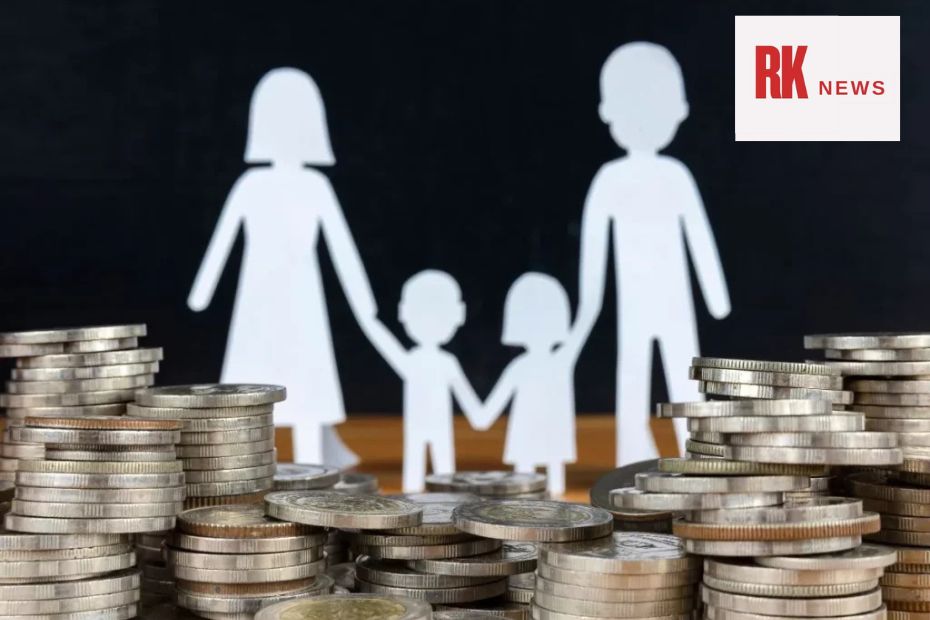Starting April 2025, families across the UK will see an increase in their Child Benefit payments. With the new rates, parents and guardians will receive £26.05 per week for the first child and £17.25 per week for each additional child. This boost in Child Benefit is aimed at providing crucial financial support to families, helping them manage the rising cost of living.
What Are the New Child Benefit Rates?
From April 6, 2025, the government will implement the updated Child Benefit rates:
- £26.05 per week for the first child (an increase from £25.60 in the previous year).
- £17.25 per week for each additional child (an increase from £16.95 in 2024).
This change marks a vital adjustment to help families cope with the ongoing pressures of inflation and living costs. The increase is in line with the government’s efforts to ensure families receive the necessary financial support, especially in uncertain economic times.
How Much Will Families Receive Each Month?
With the updated rates, the monthly payments for families will be as follows:
- 1 Child: £104.20 per month
- 2 Children: £175.20 per month
- 3 Children: £246.20 per month
- 4 Children: £317.20 per month
This new structure will help support over 7 million families across the UK, providing vital assistance that contributes to reducing child poverty and supporting economic stability in households.
Eligibility Criteria for Child Benefit
To be eligible for Child Benefit, children must be under 16 or under 20 if they are in full-time education or training. Families with children who meet these criteria are typically eligible to claim, though high earners should be aware of the High-Income Child Benefit Charge (HICBC), which may apply if one parent earns over £60,000.
Here’s a quick overview of the eligibility conditions:
- Income Threshold: Parents earning over £60,000 may have to pay back some or all of the benefit through the HICBC.
- Dependents: Only children under the age of 16, or under 20 if in education or training, qualify.
- Tax Considerations: If a parent’s income exceeds the £60,000 threshold, they may be required to repay the benefit.
How to Apply for Child Benefit
Applying for Child Benefit is a straightforward process. To get started, parents need to complete and submit the CH2 form to HMRC (Her Majesty’s Revenue and Customs). Claims can be backdated for up to three months, so it’s important to apply as soon as possible to avoid missing out on benefits.
The payments are typically issued every 4 weeks, either on a Monday or Tuesday, depending on your payment schedule.
Why You Should Still Apply, Even if You Earn Over £60,000
Even if your income exceeds the £60,000 threshold, you should still apply for Child Benefit. While high-income families may have to repay the benefit through the HICBC, applying ensures you still protect your National Insurance (NI) credits, which can impact future State Pension entitlements. Failing to apply could mean missing out on valuable NI contributions, which are crucial for your retirement benefits.
The Impact of Child Benefit Increases on Families
The increase in Child Benefit payments comes at a time when families are facing rising living costs, including food, housing, and childcare expenses. This additional support will play a key role in alleviating financial pressures and improving the overall economic well-being of households.
Past increases in Child Benefit have been linked to reductions in child poverty and improved economic stability, particularly among lower-income households. The 2025 rise will further strengthen the social safety net for families across the country.
Common Mistakes to Avoid When Claiming Child Benefit
To ensure you receive your full entitlement and avoid delays or penalties, here are some common mistakes to watch out for when claiming Child Benefit:
- Not applying to protect your NI credits: Even if you don’t plan to accept the payments due to income, applying ensures that you protect your National Insurance contributions, which count towards your State Pension.
- Not updating your details with HMRC: If your income changes or you move to a new address, make sure to update HMRC to prevent payment issues.
- Missing the 3-month backdating window: Claims can be backdated for up to three months, so it’s crucial to apply as soon as possible.
How the UK’s Child Benefit Compares to Other Countries
Child Benefit schemes vary around the world, with different countries offering varying levels of financial support. Here’s a quick comparison of the UK’s Child Benefit against similar programs in other countries:
- Germany: ~£180 per month, paid for all children up to age 18 (or 25 if in education).
- Canada: ~£350 per month, means-tested; varies by province.
- France: ~£120 per month, paid for two or more children only.
In comparison, the UK’s Child Benefit is relatively straightforward, with no means test, but it does come with the requirement for high-income earners to pay back some or all of the benefit.
The increase in Child Benefit rates for 2025 is a welcome change for millions of UK families. By understanding the eligibility requirements, applying on time, and being mindful of potential tax implications, parents can ensure they maximize their benefits. Whether you’re a new parent or already receiving Child Benefit, it’s important to stay informed about the latest changes and how they can help you and your family navigate the challenges of everyday life.
If you haven’t already, make sure to apply for Child Benefit before the 2025 rates take effect. The support it provides is invaluable for many households, and securing it is a step toward improving your family’s financial stability.
